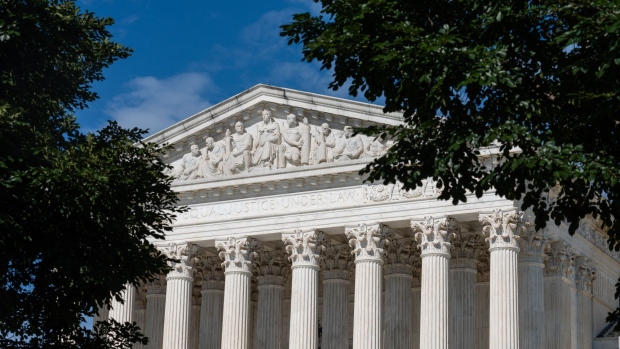Oct 3, 2022
Supreme Court Weighs Curbing Clean Water Act in Jackson’s First Case
, Bloomberg News

(Bloomberg) -- The US Supreme Court signaled interest in limiting the reach of the Clean Water Act as the justices opened the Ketanji Brown Jackson era with a case that could mean fewer federal restrictions governing development and pollution.
Jackson was an active questioner as the justices grappled with a clash that pits property-rights advocates and business groups against environmentalists and the Biden administration.
The court is considering the extent to which the Clean Water Act and its permitting requirements apply to wetlands that sit nearby a lake, river or other major waterway. The 1972 law gives the federal government authority over what are alternatively known as “navigable waters” and “waters of the United States,” and a provision added in 1977 suggests that “adjacent” wetlands are covered as well.
The court’s conservative wing, and at times some of its liberals, questioned whether the Biden administration’s proposed test would give clear guidance to people seeking to build on their property. The law imposes civil and at times criminal penalties for noncompliance.
Justice Neil Gorsuch asked Justice Department lawyer Brian Fletcher whether a “mileage limit” exempted property far away from a major waterway. Gorsuch made clear he wasn’t satisfied with the multifactor test Fletcher described in response.
“So if the federal government doesn’t know, how is a person subject to criminal time in federal prison supposed to know?” Gorsuch asked.
Jackson Help
Gorsuch’s questions prompted Jackson to jump in to help Fletcher, prodding him to describe a process that lets landowners get an assessment from the government at no charge.
“And so you’re not really facing criminal liability without the opportunity to get an assessment from the government regarding your particular circumstances,” Jackson said.
The justices are hearing an appeal from Chantell and Michael Sackett, an Idaho couple waging a 15-year-old battle to build a house on land that federal regulators say is protected wetlands. The Sacketts won a 2012 Supreme Court ruling that let their lawsuit go forward.
The fight involves a 0.63-acre property near Priest Lake in northern Idaho. The property is about 300 feet (91 meters) from the lake and, on the other side, across a road from a tributary of a creek that feeds into the lake. The EPA says that the land is connected to the lake through a subsurface flow of water.
Jackson jumped in less than 10 minutes into the argument, questioning contentions by the Sacketts’ lawyer, Damien Schiff of the Pacific Legal Foundation, that the Clean Water Act covers only wetlands that abut a major waterway and not those that are merely nearby.
“Why would Congress draw the coverage line between abutting wetlands and neighboring wetlands when the objective of the statute is to ensure the chemical, physical and biological integrity of the nation’s waters?” she asked.
Seeking Compromise
Each lawyer drew tough questions from across the court’s ideological divide. Conservative Justice Brett Kavanaugh said that “seven straight administrations” had disagreed with Schiff and interpreted the Clean Water Act as at least covering wetlands that were separated from a major waterway by a levee, berm or other barrier.
Liberal Justices Elena Kagan and Sonia Sotomayor suggested they were interested in forging a compromise that might satisfy some of the court’s conservatives without dramatically scaling back the Clean Water Act.
“As you can probably tell, some of my colleagues are dubious that this is precise enough definition, adjacency, to survive,” Sotomayor told Fletcher. She asked whether Fletcher had “another test that could be more precise and less open ended.”
The legal fight began in 2007 when the EPA issued an administrative compliance order requiring the Sacketts to restore land they had already begun preparing for construction.
The case has bounced up and down the court system since then. A federal appeals court last year said the Clean Water Act covered the property, prompting the Sacketts to turn to the Supreme Court a second time.
The case is Sackett v. Environmental Protection Agency, 21-454.
©2022 Bloomberg L.P.







